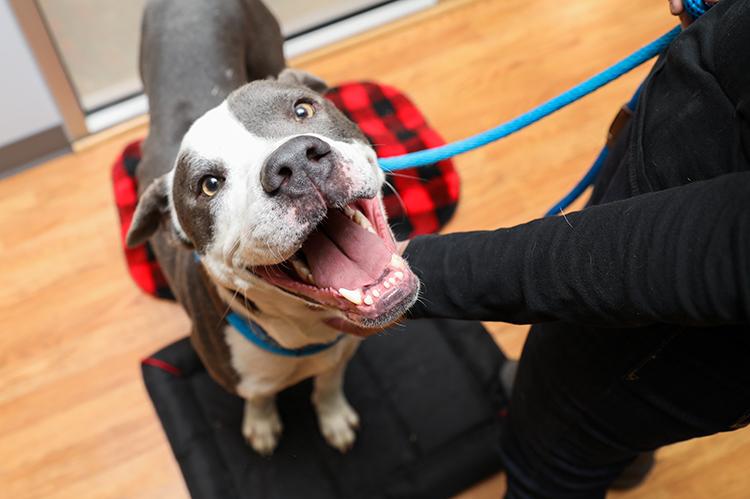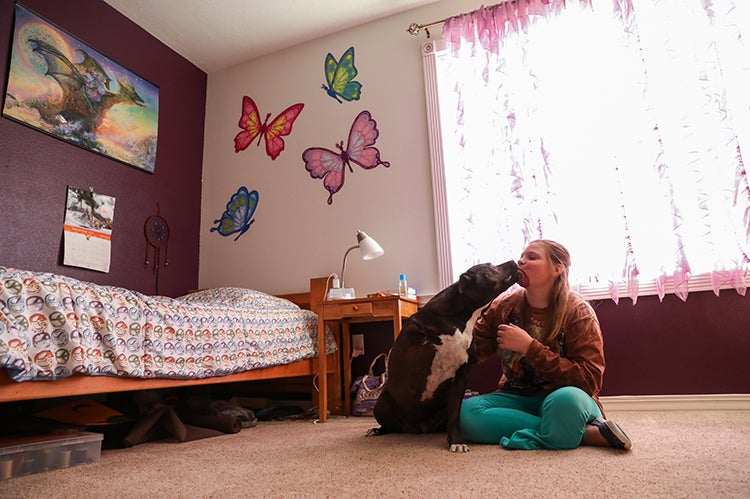Pet-Friendly Rentals: A Guide to Finding Housing

Our pets are family. They’re our best friends, and they improve the quality of our lives. And when you have to move, finding pet-friendly housing is top priority. But sometimes that task isn’t easy.
Planning well in advance and following the helpful tips in this guide will help to reduce your stress as you search for pet-friendly rentals and put you and your pet in the best possible position.
Pet-friendly rental options
The first step in your pet-friendly rental search is deciding what type of rental works best for your needs, personal preferences, and budget.
Your options come down to renting an apartment or a single-family home, townhome, or condo. Though typically more expensive, a private home with a fenced-in yard is usually a more dog-friendly rental option than an apartment. However, no matter the type of property, each will have its own set of rules regarding renting to tenants with pets. So find out what the pet policies are up front. A quick online search will yield numerous resources for locating properties that have pet-friendly rental policies.
Even if a landlord has a no-pets policy, don’t immediately give up, especially if the property meets all your other needs. Discuss your desire to rent the place with the landlord, and come prepared with references for your pet — from your vet, previous landlords, and neighbors.
Offering to pay an extra security deposit might get the landlord to consider your application more favorably, as could offering to have your pet meet the landlord. Please don’t think about sneaking your pet into the property after signing a lease and paying a security deposit. It’s guaranteed to not end well.

Obstacles when searching for pet-friendly housing
There are many types of landlords, but they all have the goal of earning income from leasing their properties.
Regardless of the type of landlord, most are selective about to whom they rent. After all, it’s difficult to make a profit if tenants don’t pay their rent, disturb their neighbors, or cause extensive damage to the property. Left unresolved, these offenses usually result in an eviction proceeding, which is unpleasant and costly for both landlords and tenants.
That’s why prospective renters usually must submit to credit, financial, and background checks as part of the application process. A positive check doesn’t guarantee a problem-free tenant experience for a landlord, but it often increases the chances while placing the applicant in a better position of obtaining a lease.
For those hoping to rent with pets, there is an additional barrier to overcome. Companion animals come in a variety of sizes and types, and unfortunately many landlords have breed and size restrictions in place.
Big dogs, such as pit bulls, huskies, and Dobermans, are sometimes not welcome because they’re unfairly and incorrectly deemed to be aggressive. In some cases, landlords do not allow tenants with cats. In addition, many rental insurance companies will not cover pit bulls and dogs who look like them, which might prevent landlords from renting to families with those types of dogs.
Increasing your chances of finding pet-friendly housing
There are some effective ways to increase your chances of finding a pet-friendly house or apartment and overcome pet restrictions, no matter what type of pet you have.
Here are some suggestions:
- Do your research well in advance. Once you realize you need to move, start looking for pet-friendly rentals right away. You can search real estate listings and classified ads, ask for advice on social media, and look on websites like apartments.com. Rental sites often include filters that allow you to search for places that allow pets.
- Have renters insurance with a pet liability clause already in hand to help convince your potential landlord.
- Create a pet résumé summarizing your pet’s best qualities, medical history, and references from previous landlords (if possible). This is a cute way to let your potential landlord know that you’ll be a responsible renter.
- Advocate for your pet. Even if a landlord advertises “no pets allowed” or has breed or size restrictions, some will make exceptions, especially if you advocate for your pet. Invite your potential landlord to meet your pet.

Signing a lease when renting with pets
If your landlord agrees that you can have a pet but the lease says “no pets allowed,” do not sign that lease.
Instead, ask your landlord to amend the lease to cross out the “no pets” language or replace the language with phrasing about your pet. You and your landlord should both put your initials next to the changes before you sign. Be sure that your lease also specifies whether you are responsible for pet deposits or monthly fees.
Once you’re in your new home, as long as your pet doesn’t cause damage or bother other people, there shouldn’t be any conflict with your landlord. However, if something happens that’s beyond your control and your landlord says you must get rid of your pet, there are steps you can take to protect yourself and your pet:
- Read your lease thoroughly to ensure that the landlord is not violating it. Then check to see whether any local laws outweigh your lease. Even if your lease doesn’t allow pets, depending on local laws you might have a right to keep your pet.
- If you receive notices from a co-op or condo board to get rid of your pet, seek legal assistance to determine your rights.
- Be aware that no landlord can enter your home and remove your pet. All landlords have to follow a legal process and can’t enter your home without notice unless it’s an emergency or your lease specifies.
- If you’re facing eviction or loss of your pet, don’t panic and immediately take your pet to a shelter. Explore your rights via legal resources. You can seek help from a nonprofit agency that offers low-cost or free legal assistance.
Working out a problem with your landlord regarding your pets can be stressful. But by taking the steps above, you can help to ensure that you and your pet can stay together.
How to be a responsible renter with pets
If your pet is happy, healthy, and well-behaved, your landlord will be happy, too. But sometimes, even if you’re responsible, problems with your pet can arise.
If you have a dog who constantly barks while you’re at work, a pup who is reactive toward other dogs or people, or a friendly dog who likes to jump up on everyone, your neighbors might think unfavorably of you and your pet. The same goes if you have a cat who sprays indoors or there’s a litter box odor that emanates from your apartment. It’s sure to attract attention — and not the good kind.
The resources below can help with your pet’s behavior issues, such as barking, chewing, scratching, and more.
- Cat Not Using Litter Box: Causes and Solutions
- Cat Behavior Modification: Desensitization and Counterconditioning
- Cat Behavior Problems? These Resources Can Help
- How to Stop Dog Barking That's Problematic
- Getting the Behavior You Want From Your Dog
- Dog Bite Prevention: Managing Behavior Issues

Fighting for your rights as a renter with pets
Those looking for a house or apartment to rent shouldn't be separated from their beloved pets.
That’s why Best Friends Animal Society works hard to promote pet-inclusive housing, where both you and your pet are welcome tenants. It’s why we’ve created this guide to help you plan ahead, navigate challenges, and find the right home for your family.